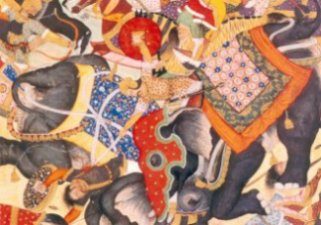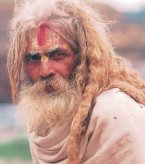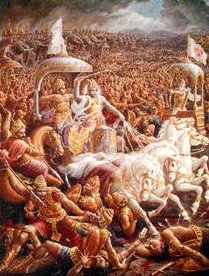| |
 |
|
|
| |
|
 |
| 
|
|
|
WAR AND PEACE : THE MAKING OF INDIA'S POLITY |
aaaa |
| |
|
|
|
| |
 |
|
|
| |
|
|
| |
 |
|
| |
|
|
| |
|
|
| |
|
|
| |
|
|
| |
|
|
| |
|
|
| |
|
|
|
| |
|
|
bvbvbvbb |
|
|
 |
|
Heat and Dust, Pageantry and Rituals, Battles
and Bullocks, Mercenaries and Monks, |
|
| |
Courts and Temples, Mosques and Markets, Spices
and Sounds, Turbans and Hats, |
|
| |
Sovereigns and Subjects … The list can go on. |
|
| |
ss |
sssss |
|
| |
Familiar, persistent and enduring images that
immediately rise |
 |
|
| |
when we seek to discover India study her history
or make sense |
|
| home |
|
of her unique energy. |
|
| prologue |
|
|
|
|
| welcome |
|
Images that speak of a rich and layered past
and carry emotive, |
|
| contents |
|
spontaneous associations. |
|
| subject
moderators |
|
|
|
|
| history |
|
Images that we shall see are part and products
of a 5000- year-old history. A history |
|
| sexuality |
|
that has seen the rise and fall of dynasties,
the formation and mutation of |
|
| social
landscapes |
|
communities, the building and dismantling
of structures, the articulation and |
|
| art |
|
interrogation of ideologies. |
|
| dance |
|
|
|
|
| literature |
|
This
page intends to explore these rich seams of history that went on to make
up the |
|
| music |
|
material fabric of India's civilization. From
tribe to chieftainship to small states to |
|
| cinema |
|
monarchy, to empire and to a nation state is
a saga that reveals not one layer but |
|
| environment |
|
many, that unfolds the play of many Indias
and yet one India. |
|
| economics |
|
|
|
|
| pot
pourri |
|
We hope to capture some of these moments in
time as India's political landscape was |
|
| feedback |
|
formed and reformed. |
|
| |
|
|
|
|
| 
|
|
What is the best way to do this history? |
|
| |
A singletrack chart or a multi track one? |
|
| |
|
|
|
| |
Using a time line series as a reference back
up, we will explore key themes that are |
|
| |
easily identifiable as the building blocks
of India's political identity. |
|
| |
|
|
|
|
| |
|
Wars and battles, rulers and dynasties gave
the subcontinent a variety of |
|
| |
|
institutions and ideas that combined to produce
a very distinctive political |
|
| |
|
landscape, social institutions and a defining
ideology. |
|
| |
|
|
|
|
| |
|
|
|
| |
|
|
| |
|
|
| |
|
|
| |
|
|
| |
|
|
| |
|
|
| |
|
|
| |
|
|
| |
|
|
| |
|
|
| |
|
|
| |
|
|
| |
|
|
| |
|
|
|
|
|

|
|
| |
Our story shall be built around these threads, each
intermeshed with the other to create a |
|
| |
fabric of rich and complex hues. We begin with the
Great War - the battle of Kurukshetra |
|
| |
the 18-day battle that not merely epitomized contemporary
political tendencies but |
|
| |
sounded the clarion call for an identity polity of
the future. The war rounded off one stage |
|
| |
in the advance of the Indo Aryan tribes in India.
It celebrated the triumph of monarchy |
|
| |
and set the stage for the fuller delineation of Brahmanical
civilization in the subcontinent. |
|
| |
It would be followed by many more wars and by long
interludes of peace and stability, in |
|
| |
the course of which ideas and institutions would evolve
and reconfigure to create a dynamic |
|
| |
and distinctive civilization. Invasions and battles
were not always sharp disjunctures; |
|
| |
processes of accommodation and cultural fusion commonly
followed these, by the appearance |
|
| |
of new ideas
and institutions. |
|
|
|
| |
|
| |
|
| |
|
| |
|
| |
|
| |
|
|
| |
|
|
| |
|
|
| |
|
|
| |
|
|
| |
|
|
|
|
| 
|
|
Around the 7th century, India, as an organic
territorial entity was a reality - by now, |
|
| |
India was conceived both by the people of the subcontinent
and by foreign visitors, |
|
| |
notably the Chinese, as extending from the
Himalayas to the southern tip of the |
|
| |
landmass. By this time, a single complex system of political,
ideological, economic |
|
| |
and cultural relations and institutions
prevailed over the whole subcontinent. The |
|
| |
centuries thereafter, saw the fading
away of the classical pattern and its replacement |
|
| |
by regionalism with all its vitality
until the advent of Islam. |
|
| |
|
|
|
| |
Armed with a young and egalitarian
ideology, bands of Muslim warriors from Central |
|
| |
Asia made their way into India,
set up their rule, constructed a new and more |
|
| |
centralized state structure and
created conditions for an Indo Islamic culture, with all |
|
| |
its ambiguity and creativity. The
formation of the Delhi Sultanate paved the way for |
|
| |
greater accommodation under the
Mughals. It was now that the idea of a centralized |
|
| |
proto modern state was partially
achieved as the Mughal Empire sprawled over |
|
| |
virtually the entire subcontinent
at the time of its greatest power; and enjoyed the |
|
| |
|
acquiesence - at least for a while
- of the majority of its subjects. It was in the |
|
| |
|
aftermath of Mughal decline and
its replacement by the rule of the English East India |
|
| |
|
Company, and then the Crown, that
the critical break occurred; even as the |
|
| |
|
subcontinent was ushered into the
modern period of her history. |
|
| |
|
|
|
| |
|
Love,
Lakshmi |
|
| |
|
|
|
| |
|
|
|
| |
|
|
![]()









